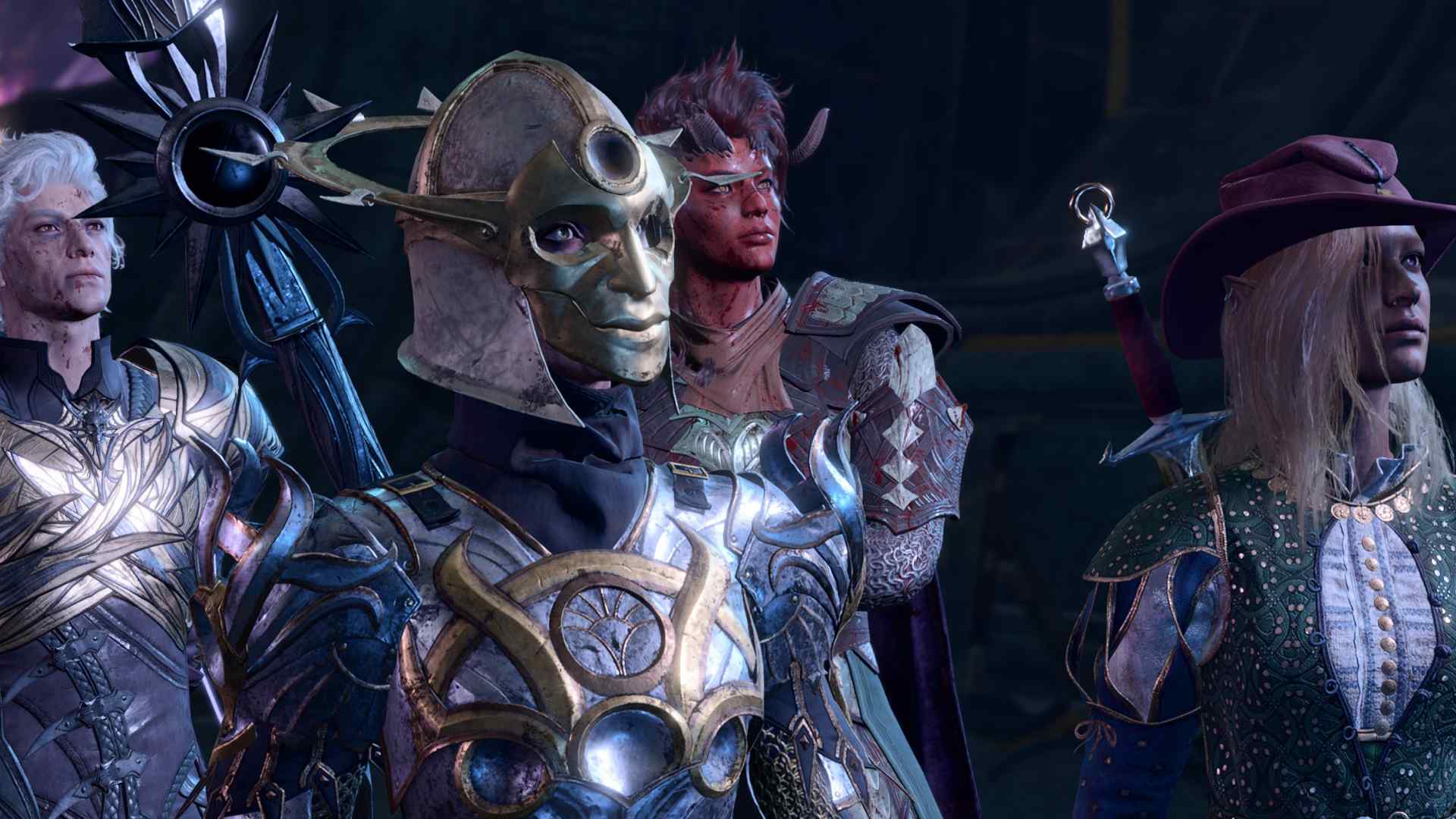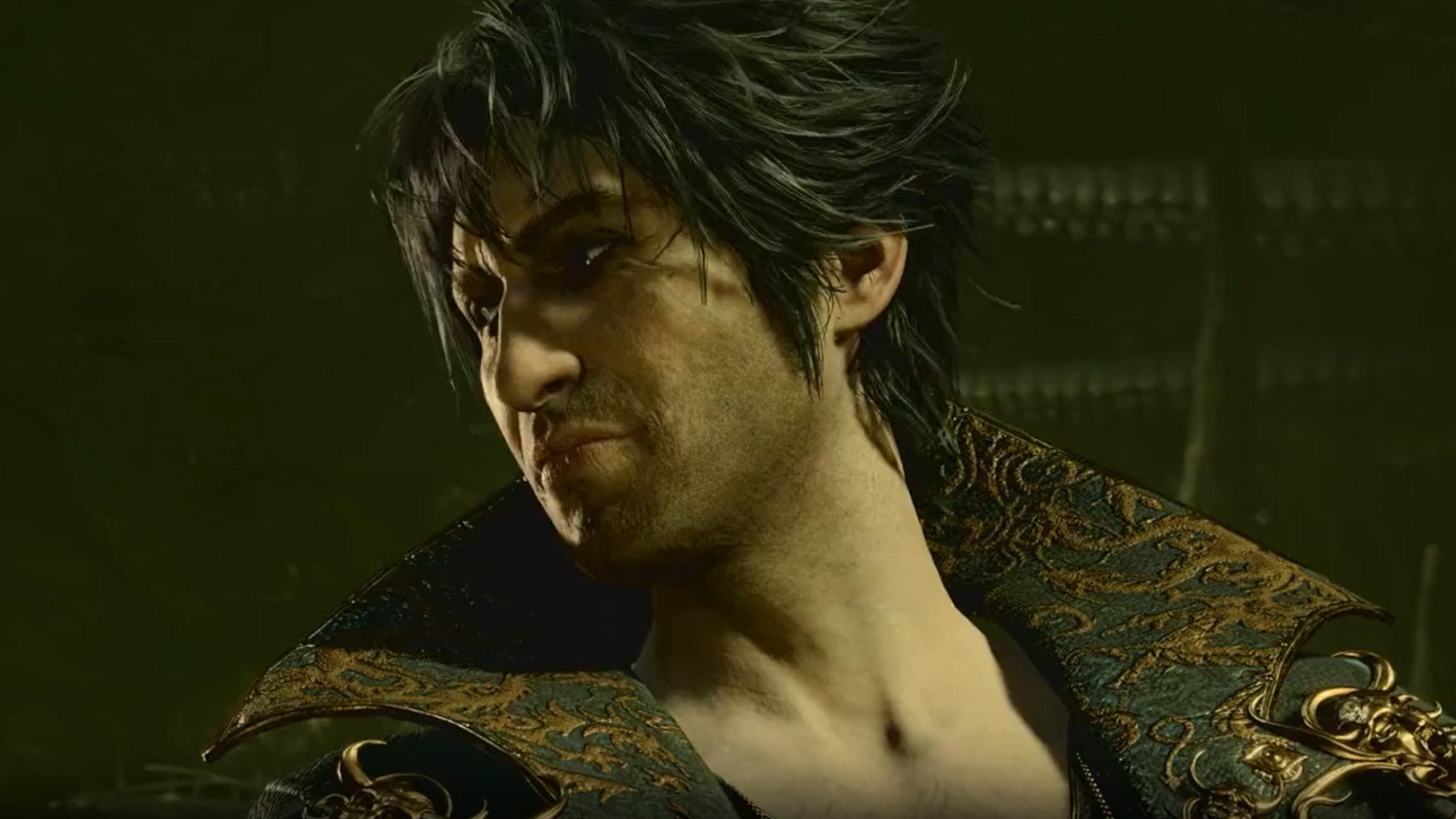
I do not plan to work with Enver Gortash, but he doesn't know that yet. One of Baldur's Gate 3's biggest players, the city's new Archduke, might have a silver tongue, but I don't trust him for a second. I've left him to his own devices for now, but I'm planning a daring heist that's sure to upset him any moment. Little do I know, however, that my plan is about to teach me about a whole new side to Baldur's Gate 3.
This article contains spoilers for Baldur's Gate 3 Act 3
Gortash is using the same tadpoles that are trapped in my head to exert influence over Ulder Ravengard, Grand Duke of Baldur's Gate. That move will help further Gortash's claim on the city, but to keep Ravengard secure, Gortash has imprisoned him in The Iron Throne. This underwater cell block is where Gortash also keeps the relatives of the engineers he's using to build his army of robocops - leverage to make sure the workers don't rise up against him.
By the time I'm heading to the Throne, Gortash's army is mostly complete, and he's already thinking about destroying the prison to ensure its inhabitants' silence. My journey to the jail starts by sweet-talking my way onto Gortash's private submarine, and it doesn't take long before he realises what I'm up to. That expedites his decision to scuttle the Throne, leaving me with a handful of turns to escape its collapsing frame and its army of fishy Sahaguin guards, all while trying to free its unfortunate inhabitants.
D20 Leagues under the sea

This wasn't the first time that I've been given a limited amount of time to find a solution to a deadly puzzle. That honor fell to a Baldur's Gate 3 moment hidden deep off the beaten track where I had to shut down a divine doomsday device. It wasn't the first time I'd been tasked with protecting innocent bystanders from vicious monsters either, the Baldur's Gate 3 hag and an early fight against the Gnolls having their fair share of hostages to protect. It wasn't even the first time that the challenge had been to get around monsters, rather than taking them on directly - the helm of the Nautiloid in the game's tutorial had made it clear that not every fight needs to be a bloodbath in order to be a victory. Until now, however, no one event had stitched those ideas together in such a backs-to-the-wall encounter.
The first time I set foot in the Iron Throne, I was caught completely by surprise. Sirens wailed as the entire structure threatened to give way around me. I scattered my party - always a dangerous move - in an attempt to cover as much ground and save as many prisoners as I could, but I barely knew where I was going. With just six turns to play with, it wasn't long before I was stuck, caught in the literal nets of the fish-like prison guards. A few prisoners had slipped through, but I could sense the incoming party wipe. Knowing that I'd soon be looking at the Game Over screen, I jumped back to an autosave a few minutes before my journey to the Iron Throne and cooked up a new strategy.
Best-laid plans

The prison is set up as a crossroads; two prisoners are in a central area, with other wings to the left, right, and front. I'd learned from my first attempt that the Haste spell, which doubles movement speed and offers an extra action, was invaluable, but that was applied by an NPC, and on Ravengard specifically. With no one else in my party who knew it, I had to rely on some different tools. The new plan was to split the party again, but this time take advantage of some very specific spells while doing so.
Sign up to the GamesRadar+ Newsletter
Weekly digests, tales from the communities you love, and more
Astarion would go forward, taking on the most dangerous part of the prison alone. While guards patrolled the other wings, more would spawn from a sunken portion in the front, where two prisoners were trapped in a some kind of medical testing area. As a Rogue, Astarion had a few tricks up his sleeve: he can Dash more easily than his allies, covering more ground, but a handful of sneaky magical items also added Invisibility and two Misty Step teleports to his arsenal. I could turn invisible to delay the guards' response to me, jump over the sunken floor with Misty Step, free the prisoners, and then hope we could make the run back through the deep water.
For left and right, I'd take advantage of another specific spell. Both Shadowheart and my Bard player character, Tav, had the Dimension Door spell queued up, allowing them to transport themselves and an ally to a spot they could see. As a Cleric, Shadowheart is a little beefier, so I sent her to the right on her own, with my Bard grabbing hold of Barbarian Karlach to head left.
Prison Break
It's smooth sailing for Tav and Karlach, who have comparatively few prisoners to free, as well as a helping hand in the form of a powerful NPC who shows up to cast that Haste spell on Ravengard. Now a temporary follower, he can sprint ahead and open the central cells, securing another two prison-breakers. On her way out, Tav's able to lock the door behind herself, trapping two guards and ensuring they won't bother us for the rest of the escape.
The forward path starts smooth, with Astarion opening up a cell door to free its inhabitant. Unfortunately, helping the other prisoner from their bonds takes up an Action, so I have to wait a turn before I can help them out. Actions also dispel invisibility, and a whole crowd of fishguards have now surfaced. Astarion's forced to flee, and, slowed down by the rising water, neither of his captives are able to make it back to the sub.
Shadowheart hits a different snag. On her first turn, she's ensnared by a guard's throwing net, leaving her vulnerable to further attacks. Unable to move, I rely on a well-placed arrow to activate the lever to open the first of two cells, but the second door is obscured behind a pillar. It takes another turn before I can act, conjuring Mage Hand to pull the lever for me. The prisoners inside set off running, but they face an uphill battle - that wasted turn gives them less time to make their escape, and means that more guards have spawned. Astarion's invisibility has also caused a problem - unable to see him, 'his' guards spent two turns sprinting towards the exit, partially blocking the one escape route.

I'm down to two turns, and while a bunch of prisoners have reached the safety of the sub, the Sahaguin are starting to outnumber those still in the Iron Throne. Astarion has sprinted away from his fallen friends, but his wimpy elf arms are far too weak to hold up the guards. I position Karlach at the exit point to soak up a few hits, using Tav's healing spells to offer some extra hit points. Shadowheart, trapped at the wrong end of the corridor, is forced to use a second spell slot on Dimension Door, and crawls to safety with just a handful of hitpoints left.
What follows is very nearly a massacre. The full-size prisoners have either been cut down, or already made their escape, and now it's five gnomes against a horde of angry fish-men. Forced to retreat, Karlach and Tav are camping the exit ladder, but for the prisoners it's all down to just how fast their little feet can carry them. Three make it out, but the initiative order fails the other two, and while I leave Tav by the door until the very last second, the other two are swiftly surrounded. I head up to the sub and escape the Iron Throne with seconds to spare, some very grateful passengers recovering around me.
Life on the outside
None of the individual components of this prison break were new, but in 60 hours I'd never seen all of those ideas stitched together so intricately, and certainly not in such dramatic fashion. And while I'd certainly had my best-laid plans go awry many, many times over the course of Baldur's Gate 3, the cascade effect of every single decision in the Iron Throne showed what could happen if a single roll went the wrong way. Every spell, every choice, every single inch of movement speed might have meant the difference between success and failure, between an extra person making it out or being consigned to a watery grave.
It's that feeling - written across the rest of the game, albeit not as apparently as this - that's stuck with me since The Iron Throne. The sense that some way, somehow, I had to make the tools at my disposal work for me, and that Baldur's Gate 3 was prepared to tell me 'no'. Even with every Dimension Door, Mage Hand, and Misty Step, not everyone was getting out alive. Even with a cunningly laid-out plan (and some decent improvisation), one tiny disadvantage could set me on an irrevocable path to failure.
Through my time with Baldur's Gate 3, I've had my share of losses - I've hit the back-to-back Critical Failures, I've missed the 99% accuracy attack, I've struck out with Astarion. But even if a Persuasion check goes wrong, or I get caught sneaking somewhere I shouldn't be, there's been a way to turn the ship around. In The Iron Throne, there was no leeway, and no margin for error. I could load up that same save a dozen times, a hundred times, and I might still never find a way to get everybody out. I've seen the component parts of this set piece scattered up and down the Sword Coast, and to see them all come together was impressive. But it's the extra layer of brutality, of the callous nature of this world and its villains, that's turned the Iron Throne into a highlight of my entire playthrough.
Our Baldur's Gate 3 review highlights "a new gold standard for RPGs."

I'm GamesRadar's news editor, working with the team to deliver breaking news from across the industry. I started my journalistic career while getting my degree in English Literature at the University of Warwick, where I also worked as Games Editor on the student newspaper, The Boar. Since then, I've run the news sections at PCGamesN and Kotaku UK, and also regularly contributed to PC Gamer. As you might be able to tell, PC is my platform of choice, so you can regularly find me playing League of Legends or Steam's latest indie hit.


